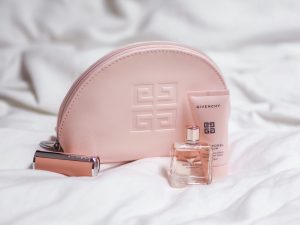Menswear for Women: When Tailoring Becomes Genderless
In recent years, the fashion industry has made significant strides towards breaking gender boundaries. From unisex clothing to gender-neutral campaigns, the lines between what is considered “men’s” and “women’s” fashion are becoming increasingly blurred. One such trend that has gained popularity is the incorporation of menswear into women’s wardrobes. With a focus on tailored pieces, this modern style movement has been termed as “genderless tailoring”. In this article, we will explore the rise of menswear for women and how it has changed the fashion landscape.
The Evolution of Gendered Fashion
For centuries, fashion has been divided into binary categories of “men’s” and “women’s” clothing. These distinctions were based on societal norms and expectations, rather than practicality or comfort. Men’s clothing was associated with strength and masculinity, while women’s clothing was confined to notions of delicacy and femininity. As a result, wearing clothes outside of these designated categories was often met with disapproval and ridicule.
However, with the rise of feminism and the LGBTQ+ movement, traditional views of gender roles and identity have been challenged. This has paved the way for individuals to express themselves through clothing without conforming to societal expectations. As a result, the fashion industry has shifted to offer more diverse and inclusive options, including menswear for women.
The Rise of Menswear for Women
In the past, women who wanted to incorporate menswear into their wardrobe typically had to settle for ill-fitting, oversized pieces from the men’s section. However, as the demand for gender-neutral clothing grew, fashion brands started offering tailored pieces designed specifically for women. This led to the rise of menswear-inspired collections, featuring sharp suits, structured blazers, and tailored trousers, all with a feminine touch.
Menswear for women has also gained popularity in the workplace, where power dressing has traditionally been associated with men. This trend has allowed women to command authority and break away from the traditional office attire. It has also given women the freedom to express themselves through fashion, rather than conforming to outdated gender norms.
The Appeal of Genderless Tailoring
One of the main reasons for the popularity of menswear for women is its versatility. The tailored pieces are designed to fit and flatter the female body, providing a range of options for different body types. This has made it easier for women to incorporate menswear into their everyday wardrobe, without feeling restricted by traditional ideas of gender-specific clothing.
In addition to comfort and fit, menswear for women also offers a sense of empowerment. By breaking away from traditional femininity, women are able to challenge societal expectations and assert their own individuality. This has also sparked a conversation on gender equality and the importance of not limiting oneself to predefined gender roles.
Styling Menswear for Women
When it comes to styling menswear for women, the options are endless. The tailored pieces can be dressed up or down, making them suitable for different occasions. A well-fitted suit paired with a blouse or heels can make a powerful statement in the workplace, while a tailored blazer layered over a dress can add a touch of sophistication to a casual outfit.
Aside from the traditional tailored pieces, menswear for women can also be incorporated into everyday outfits. A pair of fitted trousers can be paired with a plain t-shirt and sneakers for a casual yet stylish look. Or, for a more edgy look, a crisp white shirt can be styled with a pair of boyfriend jeans and loafers.
In Conclusion
The fashion industry is constantly evolving, and with it, so are the norms and expectations. The rise of menswear for women, with its focus on genderless tailoring, is a symbol of progress and inclusivity. It allows individuals to express themselves freely through fashion, without being confined to traditional gender roles. As more and more fashion brands embrace gender-neutral fashion, we can hope to see a future where clothing is not defined by gender, but rather by personal style and individuality.











